By Rick VanSickle
In this jam-packed Niagara Wine Wire report, we look at a couple of key winemaking changes in the region, upcoming Vintages releases, new local wine releases and news from both Niagara College Teaching Winery and Brock CCOVI.
Ch-ch-ch-ch-changes
Ravine Vineyards announced on the weekend that they have hired Lydia Tomek, who resigned from Burning Kiln Winery last week, as their head winemaker.
Tomek, who was also the winemaker at Niagara’s Hernder Estate Winery before Burning Kiln, will work closely with assistant winemaker Eden Garry to execute the day-to-day operations. In her new role, Tomek will be involved in key strategic decisions and practices in Ravine’s winemaking program.

Tomek replaces Ben Minaker, who was with at Ravine for seven years, two of those as head winemaker. Minaker confirmed to Wines In Niagara that he is looking for a new challenge in the Niagara wine industry.
“Really excited to start this next chapter with the Ravine team and family,” Tomek told Wines In Niagara. “Although I never really left Niagara, there is definitely an overwhelming feeling of homecoming being here. I’m looking forward to working with fruit from one of Niagara’s most warmest and unique sites and further elevating their wine profile. I promise to respect and continue to love the farm that has over 100 years of rich family history in agriculture. It’s great to be back home. Stay tuned.”
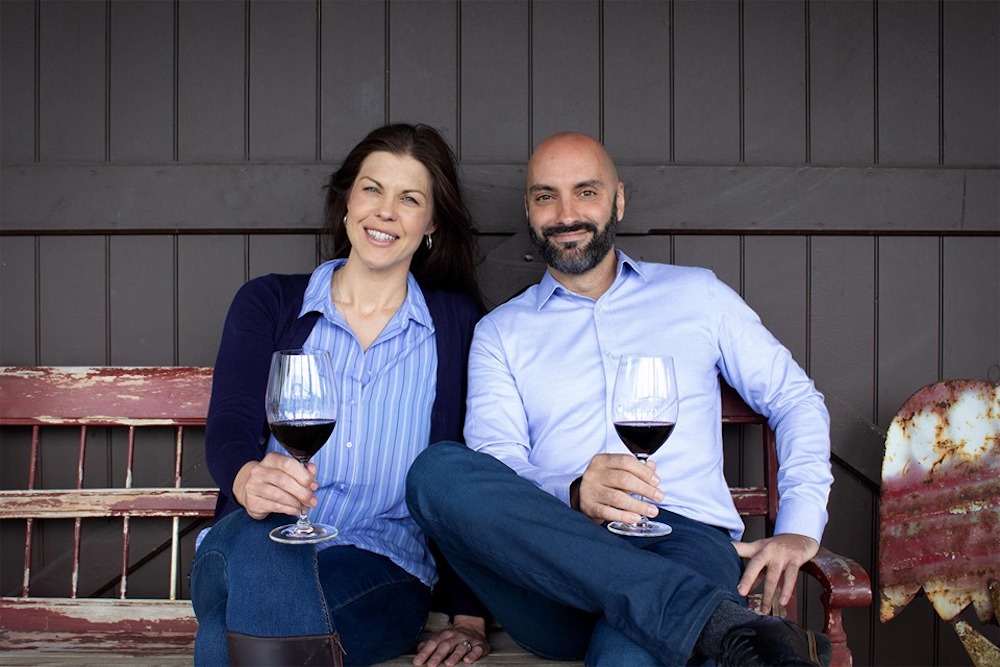
Ravine also announced the appointment of Tony Milana, aobve with Tomek, as operations manager.
Also changing jobs, but not location, is Chris Frey, who becomes head winemaker at the Twenty Mile Bench winery Megalomaniac.
Frey takes over from Sebastien Jacquey, who is taking on a larger job at the winery owned by John Howard.
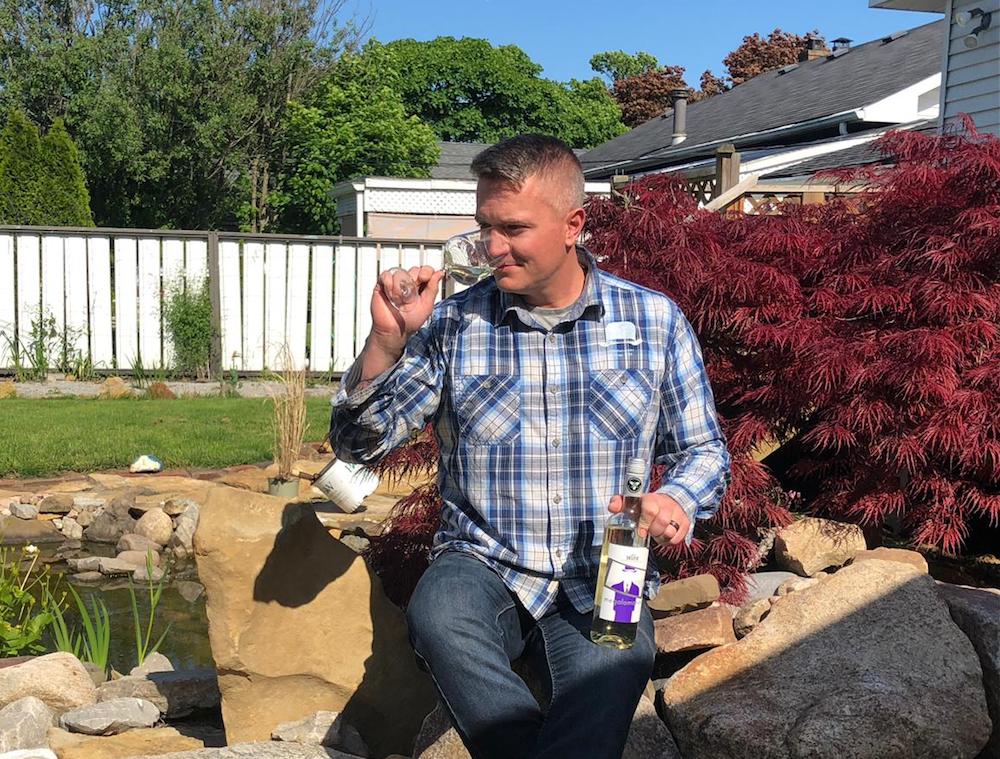
“After years of travelling the world to make wine, I found my home at Megalomaniac,” Frey told Wines In Niagara. “I am honoured and humbled — as humble as a Megalomaniac can be — to continue making great wines as the winemaker of this amazing estate.”
After a short but successful hockey career, Frey found his true passion in wine. In 2009 he graduated with honours from Niagara College’s Winery and Viticulture Technician program before setting out and apprenticing in Switzerland. Frey joined the Megalomaniac team in 2014 after spending 5 years (and 10 harvests) gaining experience in some of the top wine regions and wineries across Canada and the World.
Jacquey, a native of the Nevers region of Burgundy, worked alongside Thomas Bachelder from 2007 to 2010, and as a winemaker at Le Clos Jordanne from 2010 to 2015, before joining the team at Megalomaniac, which opened in 2009.
International Cool Climate Wine Symposium
to highlight Canada’s wine industry
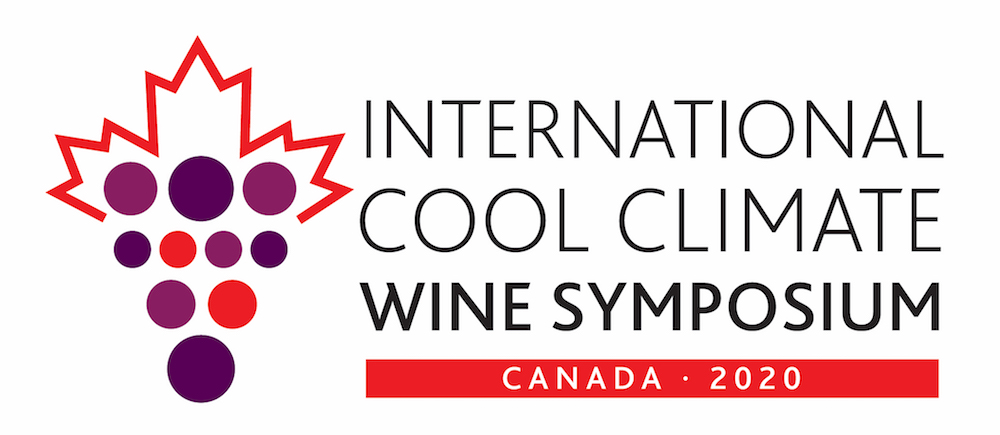
Canada will welcome the world to Brock University next summer for one of the most prestigious wine conferences, the International Cool Climate Wine Symposium (ICCWS).
From July 12 to 16, 2020, leading researchers, winemakers, grape growers, educators and media from across the globe will gather at Brock for the 10th instalment of the symposium, which takes place every four years.
Brock’s Cool Climate Oenology and Viticulture Institute (CCOVI) is planning the event alongside its research and industry partners across the country. This is the first time the conference has come to Canada and it will focus on how climate change is driving innovation in the grape and wine industry.
“This is an issue that impacts all cool climate wine regions,” said CCOVI Director Debbie Inglis. “The ICCWS will give researchers from diverse fields the chance to showcase the cutting-edge work they are doing and discuss innovative practices that can help ensure the vitality of cool climate grape growing and winemaking.”
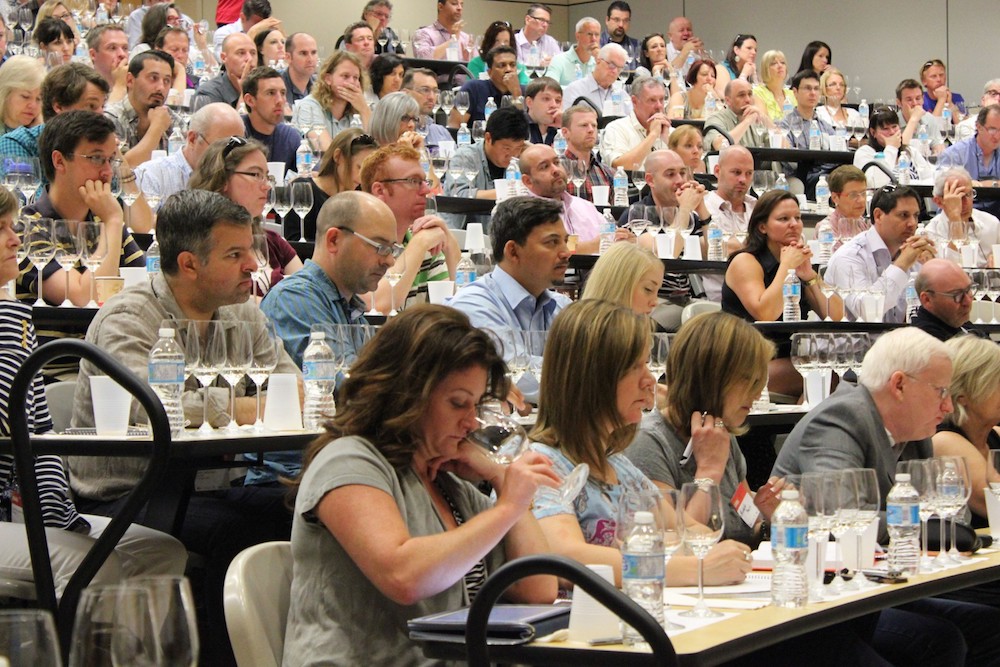
Brock will welcome Nobel Prize-winning physicist Brian Schmidt as the opening keynote speaker. Not to be confused with the talented Niagara winemaker of the same name, Schmidt is an expert on issues of climate change and has his own cool climate vineyard and winery. He is also Vice-Chancellor and President of the Australian National University.
“The International Cool Climate Wine Symposium is where the world of science and industry gets together every four years to better understand how to make outstanding wines in cool climates,” said Schmidt.
“The climate is changing and changing rapidly. ICCWS 2020 is chance for cool climate winemakers, like myself, to get on top of the science and experiences from around the world to ensure they are relevant in this fast changing and highly competitive environment.”
Schmidt has joked on social media that he is looking forward to visiting Canada and meeting Niagara’s Brian Schmidt, winemaker at Vineland Estates, to cause some confusion.
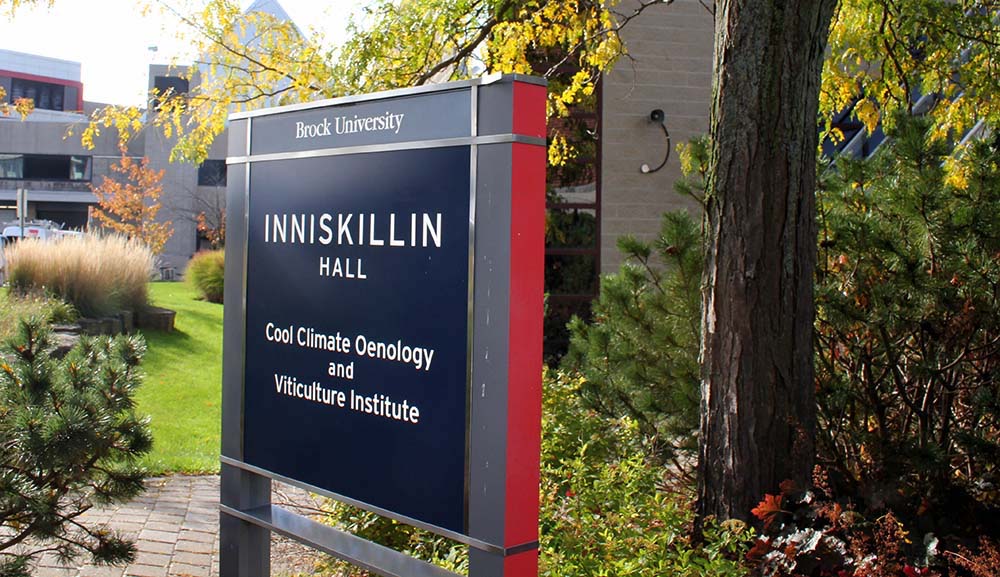
ICCWS conference sessions will focus on viticulture, oenology, wine business and science communication. Each of the four themes will include a number of speakers, seminars, master classes and workshops.
Regina Vanderlinde, President of the International Organisation of Vine and Wine (OIV), has been named as the oenology keynote speaker and will talk about the global wine overview to climate adaptation and the challenges of adopting new technology in wineries.
As the viticulture keynote speaker, Elizabeth Wolkovich from the University of British Columbia will share her research on how climate change affects different wine grape varieties and how shifting varieties may help growers.
The science communication keynote speaker will be Kimberly Nicholas, Associate Professor of Sustainability Science at Lund University in Sweden. Her research focuses on sustainable farming systems, the wine industry under climate change, and linking research with policy and practice to support a zero-emissions society.
International delegates will be introduced to Canadian wines and local culinary offerings through a number of special farm-to-table dinner options at local wineries, a Taste of Canada event and a banquet dinner at Brock University.
Abstract submissions for technical sessions and poster presentations as well as registration for the ICCWS opens in August. Learn more about the conference at iccws2020.ca.
History on tap: Niagara College Teaching
Brewery releases commemorative D-Day brew
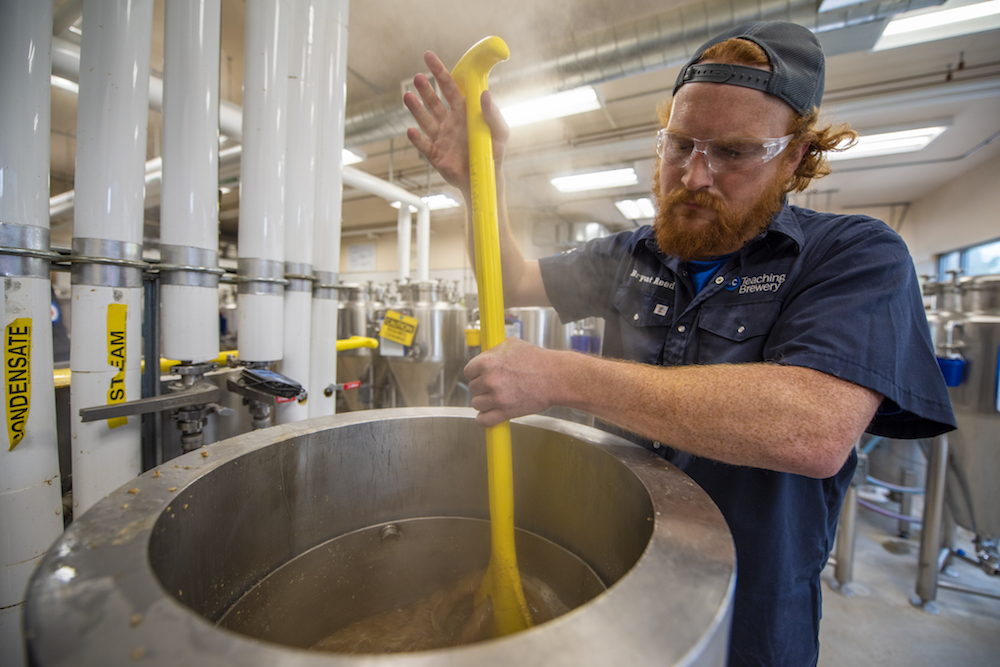
Staff and students at the Niagara College Teaching Brewery have tapped into the history of the Second World War to create a special beer in honour of the 75th anniversary of D-Day.
The commemorative brew, named Juno, was released at the College’s Teaching Brewery on May 30.
“Our faculty, staff and students from Canada’s first Teaching Brewery continue to blaze trails in the craft beer scene by introducing a commemorative D-Day beer in recognition of this pivotal historic event,” said Steve Gill, general manager of the College’s Learning Enterprises. “The process of brewing this heritage beer brought history to life for our Brewmaster students and offered them a valuable learning experience.”
College brewmaster Jon Downing became inspired to create the heritage beer after viewing a copy of St. Austell Brewery’s brewing log from D-Day, June 6, 1944, in a Brewery History Society newsletter. It struck him how the timing of the beer being brewed that day at St. Austell – based in Cornwall, England – coincided with Canadian soldiers landing on the shores of Normandy. He also researched the wartime challenge of supplying troops with beer in an article entitled “The ‘Flying Pubs’ of the Normandy Invasion: How they Brought Beer by Spitfire to the D-Day Troops” in The Journal of the Brewery History Society (2014).
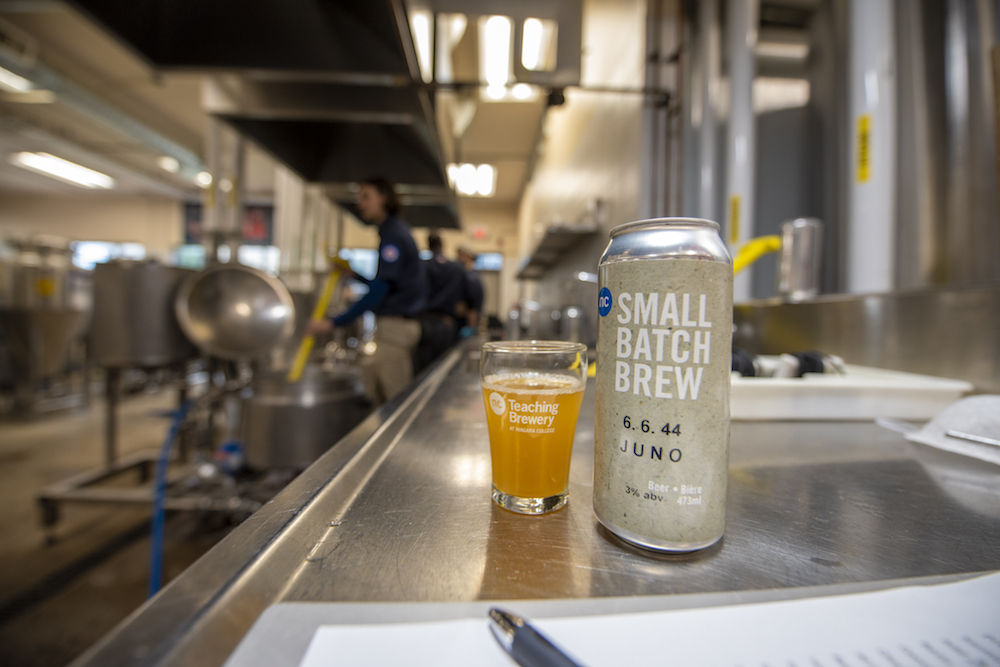
Downing contacted St. Austell’s director of brewing Roger Ryman to ask if he could reproduce the beer, and set out to create a recipe as close to the original as possible. In consultation with Ryman, and various English hops and malt suppliers – including, when possible, those who participated in the original 1944 brew – he created the recipe for Juno.
“I thought it would be a fitting tribute to D-Day,” sad Downing. “I am a fan of history and historical beers and, with the 75th anniversary of D-Day, thought it would be appropriate to show students and our customers that brewing went on, with restrictions, as part of the war effort.”
Juno is a 3% Pale Ale – which was the legal limit during the Second World War due to government restrictions and a hop shortage due to wartime bombings. The commemorative beer incorporates heritage malt varieties as well as Kent Goldings and English Fuggle hops which were used in the original recipe. Similar to St. Austell’s 1944 beer, which used flaked barley and sugar, to augment the brew due to wartime shortages of malted grain, and caramel colouring to make it appear as normal as possible, Juno incorporates a light demerara sugar and Black Treacle caramel colouring. The end result is a very light ale with distinct fermented sugar character, lightly hopped but crisp and refreshing.
The beer has also been purchased by several Royal Canadian Legion branches in Niagar and is available at the NC Teaching Brewery retail store, located at the College’s Niagara-on-the-Lake Campus (135 Taylor Rd., Niagara-on-the-Lake) in cans ($3.75), or growlers ($21 or $14 for refills) while supplies last.
Niagara pink wines shine
at Vintages release Saturday
It is the season of pink of all all hues, and Vintages stores are taking full advantage of this thirst-quenching and delicious style of wine with several being released Saturday.
We kick off our Vintages recommendations with a couple reviews of Niagara rosés followed by other recommendations at LCBO stores Saturday.
And, P.S. it’s National Rosé Day on Saturday, so you might want to stock on rosés to help celebrate the big day.

Chateau des Charmes Cuvée D’Andrée Rosé 2018 ($17, 90 points) — Chateau des Charmes winemaker Amelie Boury is always on point with this wonderful rendition of Pinot Noir rosé from estate fruit on the St. David’s Bench. Boury achieved the vibrant pink colour by using fully ripe grapes and allowing them to cold-soak overnight to bleed out the colour. It has a lovely nose of cran-cherry, raspberries, bramble and strawberry patch. There is a smidge of sweetness on the palate with a range of red berries, a silky/luxurious feel in the mouth and vibrancy through the finish. Really quite nice.
Previously reviewed rosé:
Fielding Rosé 2018 ($16, 88 points) — The success of rosé across Niagara and entire wine world, really, has given rise to many wineries producing more than one style — usually a bolder version and a much prettier, subtler, dry style. This one is a bit bolder than the estate rosé winemaker Richie Roberts makes, but still in a dry style with a nose of cherries, wild raspberries and light herbaceous notes. It’s super dry but juicy on the palate with crushed red berries and integrated herbs with a zesty finish.
Other rosés in the release Saturday:
• Thirty Bench Small Lot Rosé 2017 ($30)
• Three of Hearts Rosé 2018 ($20)
• Wildass Rosé 2018 ($19)
A few other Niagara rosés recently reviewed:
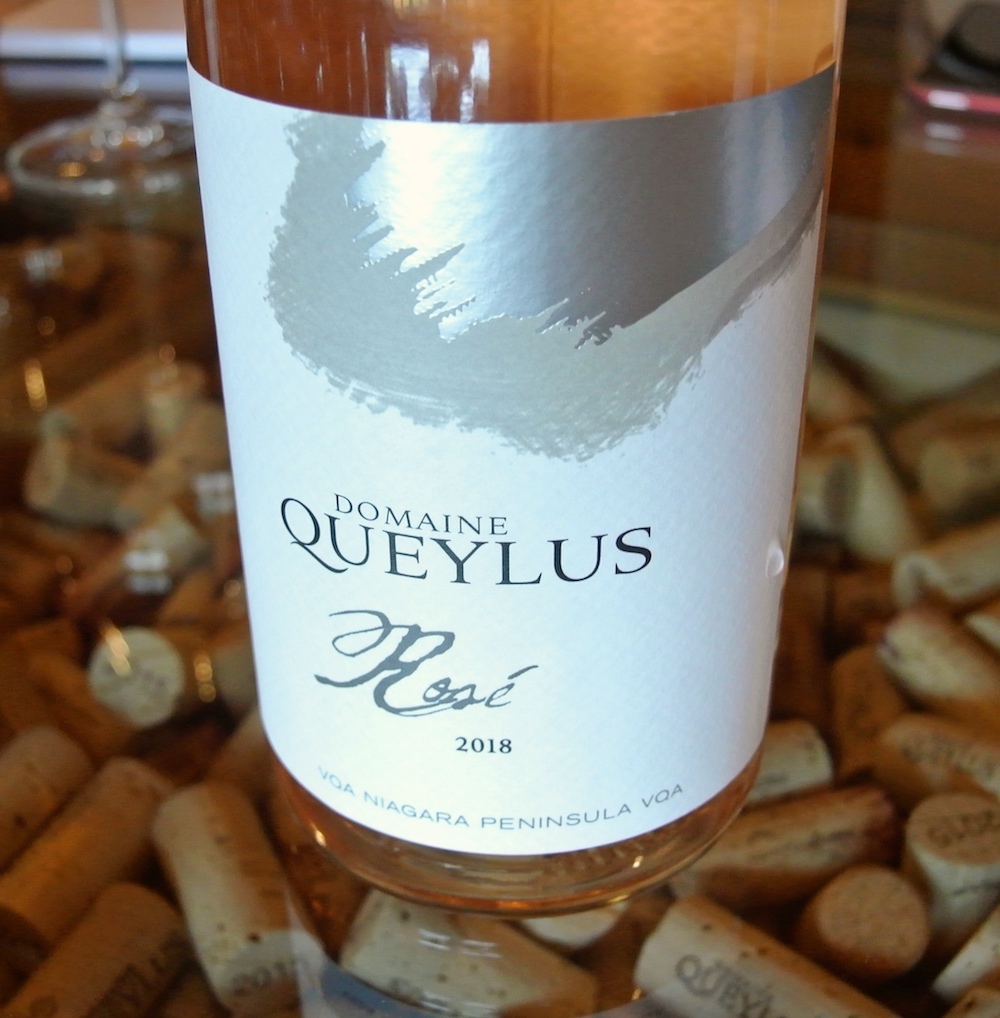
Domaine Queylus Rosé 2018 ($24, 89 points) — This 100% Pinot Noir rosé is made in the saignée method. It shows a pale salmon colour in the glass with a pretty nose of cran-cherries, raspberries and subtle herbs. It’s perfectly dry on the palate and quite lovely with delicate red berries and mouth-watering acidity.
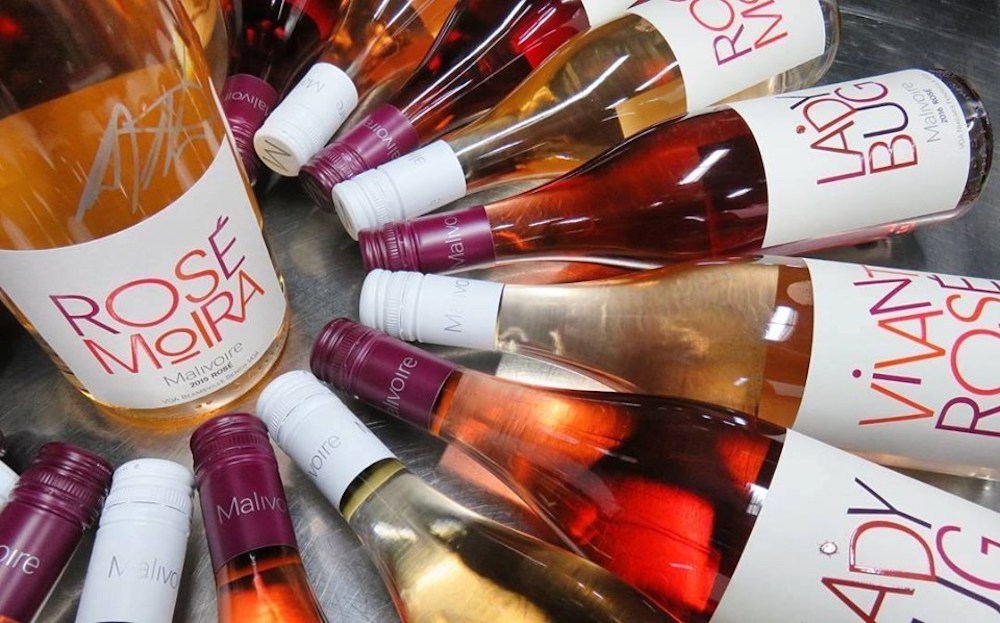
Malivoire Rosé Moira 2018 ($25, 93 points) — This single-vineyard Pinot rosé is purposely grown for the style of wine winemaker Shiraz Mottiar wants aspires to every vintage. It’s picked earlier than the regular Pinot Noir, and picked in the coolness of morning, with a gentle press to preserve freshness. It’s the lightest colour of three rosés in the portfolio with such a pretty nose of fresh raspberries, melon, strawberry and herbs. Gorgeous texture on the palate highlights a range of fresh red berries, subtle herbaceousness and electric acidity in a perfectly dry style. A beauty.
Malivoire Vivant Rosé 2018 ($20, 91 points) — This is a blend of Pinot from estate vineyards and the Mottiar Vineyard made in a similar way to the wine above. It’s a slighter darker hue of pale salmon and has “more colour than I expected,” says Mottiar. The 2018 vintage has a bit less colour than previous vintages across the board for Niagara reds. This is a bit bolder on the nose, but still pretty, with more cherry, raspberry and cranberry aromas and underlying citrus and herbs. It’s juicier and bolder on the palate with a range of red berries and a similar dry, refreshing finish.
Malivoire Ladybug Rosé 2018 ($17, 89 points) — Happy 20th rosé-versary to the venerable Ladybug, the one that started it all for rosés in Ontario. Mottiar says he’s trying to move this to a lighter colour than the brilliant pink it has been in the past, and drier. He picked a good vintage to start as colour was a bit of a challenge in 2018. The blend of Cabernet Franc, Gamay and Pinot Noir offers a bolder nose of crushed red berries and raspberry bramble that’s more upfront than the other two rosés. It’s a mouthful of pure pleasure that’s rich and robust and bursting with red fruits with just a hint of sweetness and a perky, zesty finish. Every day rosé.
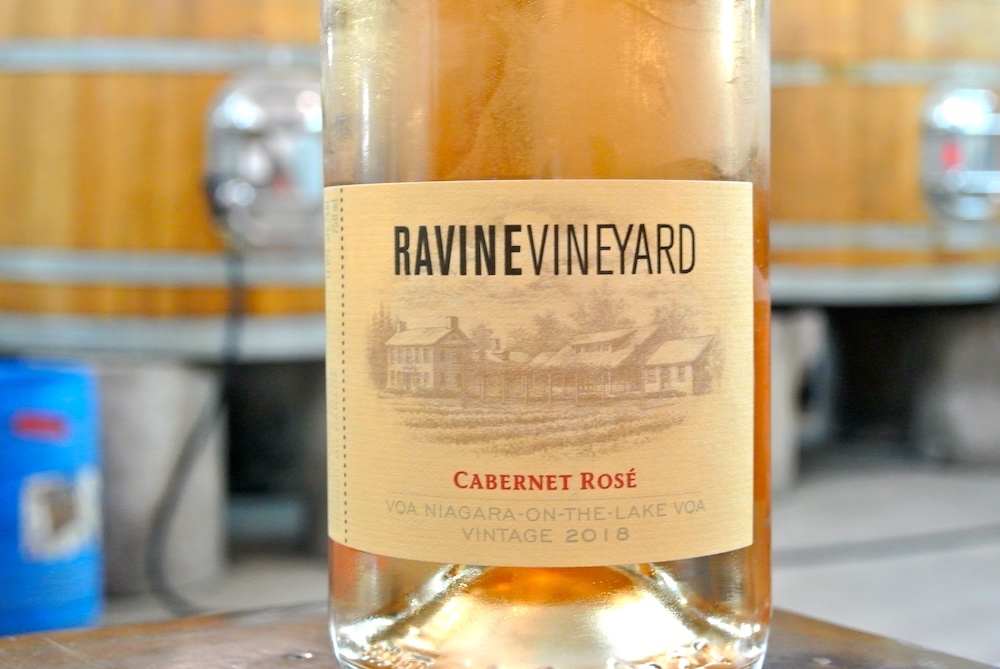
Ravine Vineyard Cabernet Rosé 2018 ($25, winery now, 90 points) — You will notice a common theme with red-grape based wines in Niagara from the 2018 vintage, including this 100% Cabernet Franc rosé. Deep, rich colours were hard to achieve from what was a hot summer and rainy fall. Former winemaker Ben Minaker doubled down on the skin contact (48 hours) for this rosé yet, still, the colour on is on the Whiter Shade of Pale (thanks Procol Harum for the line) salmon than previous vintages. But the aromas and flavours, thankfully, are gorgeous with a nose of strawberry patch, watermelon, brambly raspberry and herbs. It’s beautifully dry on the palate with juicy red berries and underlying herbaceous notes all propped up by racy, mouth-watering acidity to keep if fresh and lively through the finish.
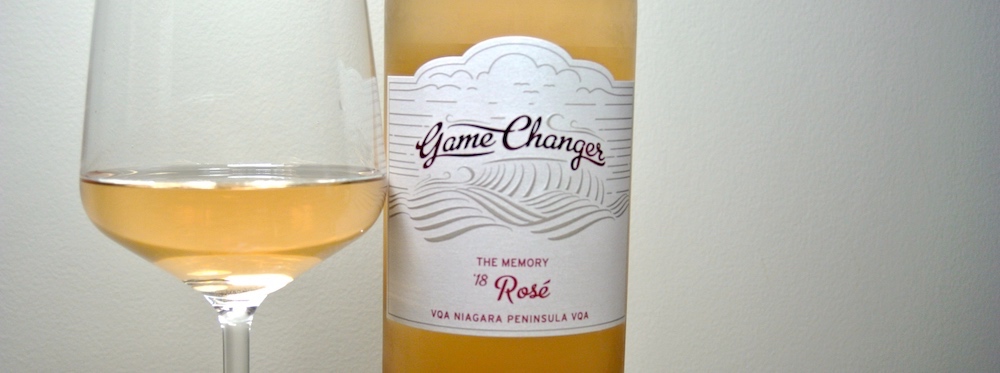
Vineland Estates Game Changer “The Memory” Rosé 2018 ($17, 90 points) — A nice tribute to Lloyd Schmidt whose memory lives on in this wine (and many other things). This blend of 75% Cabernet Sauvignon and 25% Cabernet Franc shows a pretty pale salmon colour in the glass with a nose of strawberry patch, cranberries and subtle citrus accents. On the palate it bursts with red summer berries with a hint of lemon zest. Perfect summer porch-sipper that pairs perfectly with every day life. Cheers, Lloyd.
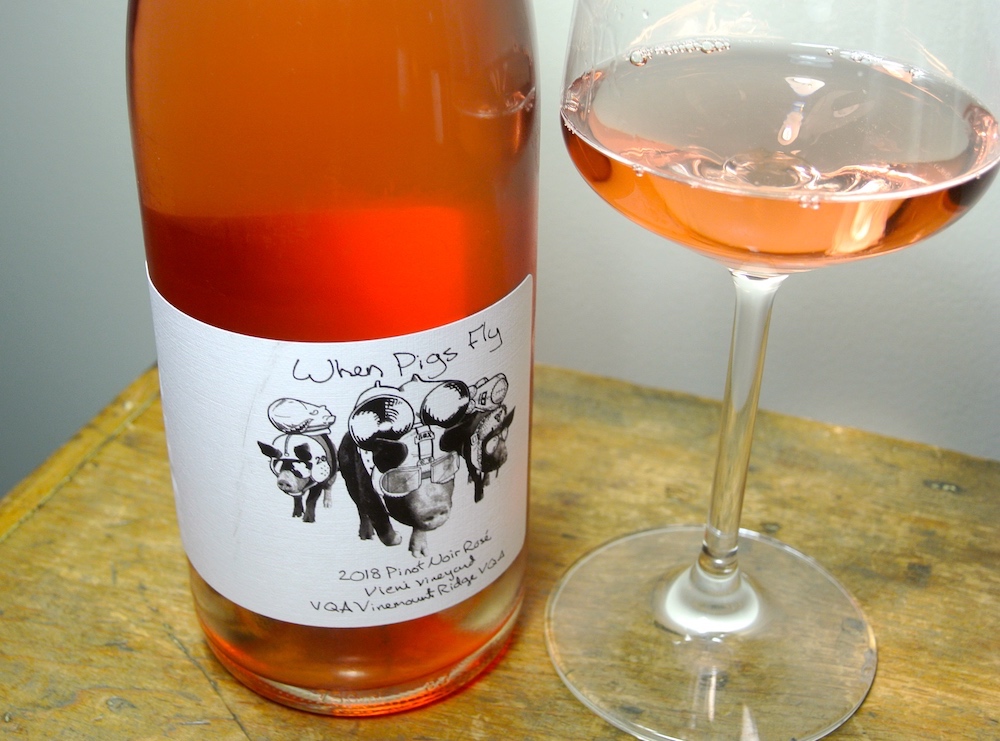
When Pigs Fly Rosé 2018 ($20, at Rockway Vineyards, 89 points) — For this second vintage of rosé, Toronto wine writer Andre Proulx sourced the Pinot Noir from the Vieni Vineyard in the Vinemount Ridge sub-appellation and enlisted Vadim Chelekhov, assistant winemaker at Kacaba, to make the wine. It shows a medium pale salmon colour in the glass with an inviting nose of crushed red berries, watermelon and just a whiff of citrus. It’s more robust on the palate and made in a refreshingly dry style (under 4 g/l of RS) with raspberry bramble, cherries, cranberries, integrated herbs and a vibrant finish. Crushable rosé.
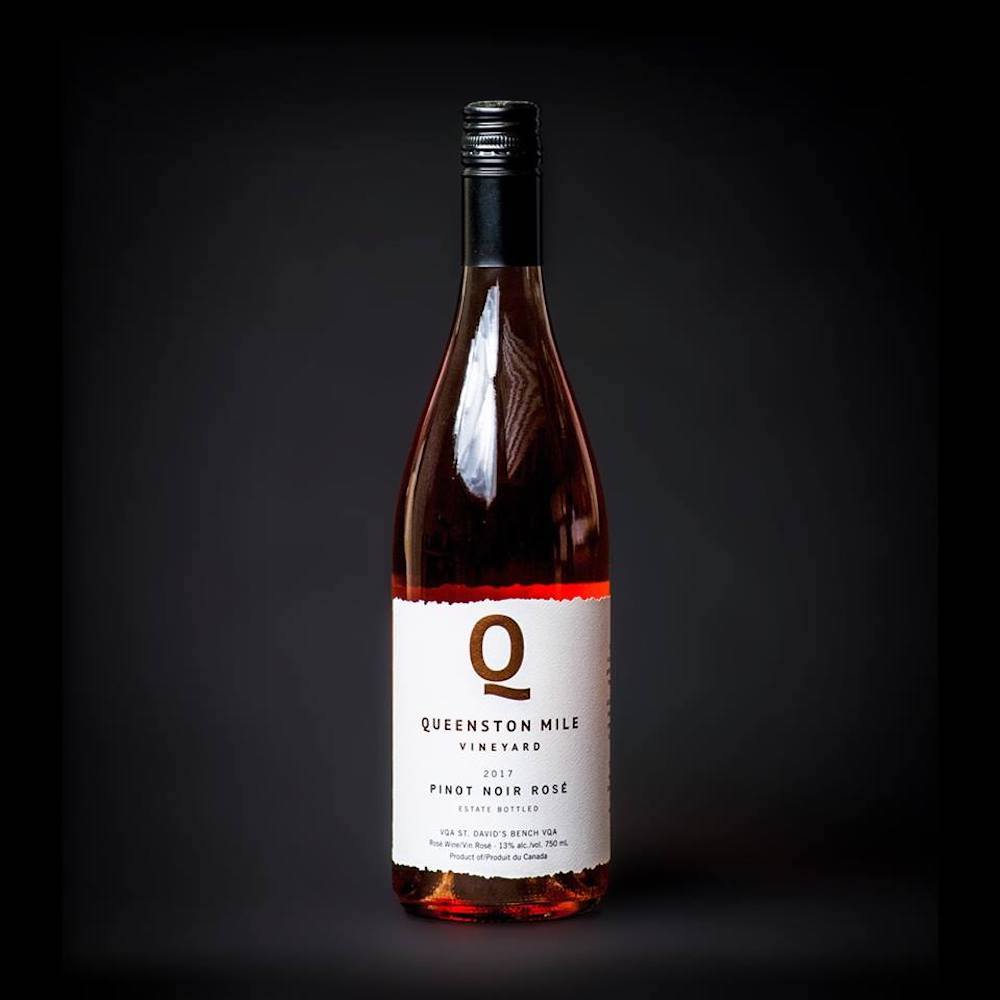
Queenston Mile Vineyard Pinot Noir Rosé 2017 ($30, 88 points) — 100% Pinot Noir from the estate’s St. David’s Bench vineyard. The pretty nose is all about the fresh red berries, cran-cherry and herbs. It’s delicious on the palate and redolent in fresh-crushed red fruits, herbs, freshness through the finish and just a kiss of sweetness.
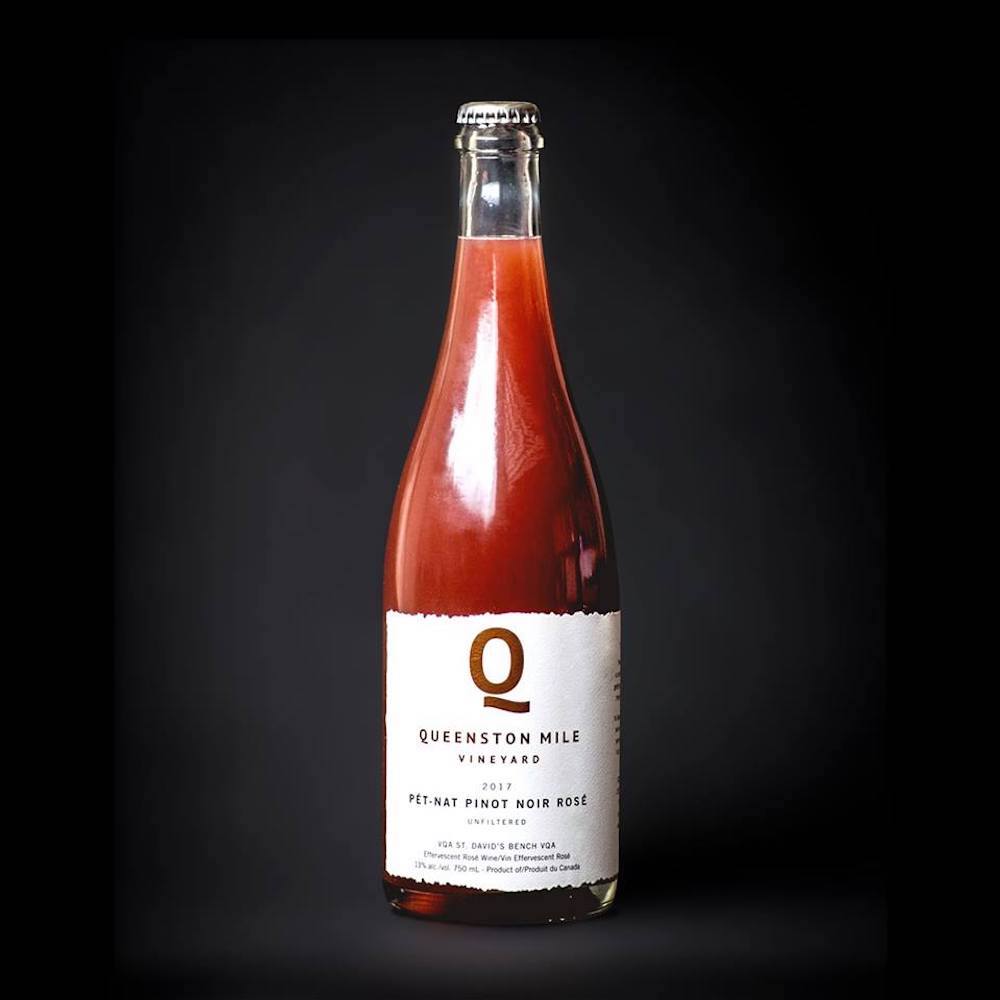
Queenston Mile Vineyard Pét-Nat Pinot Noir Rosé 2017 ($40, 92 points) — A true pét-nat made from 100% Pinot Noir that was hand-bottled during wild fermentation and underwent secondary fermentation in the bottle. The wine was left unfiltered on lees for extended aging in the bottle. Nothing added, nothing taken away. It looks like a beautiful, thick borscht in the glass, a cloudy mass of pinkish-watermelon that explodes with aromas of strawberry shortcake, cream, cherries and an underlying reductive note that is intriguing and non-intrusive. It’s wonderfully tasty on the palate with a frothy mousse and flavours ranging from mature red fruits to strawberry pie with a vibrant, electric core that keeps this jumping through the finish.
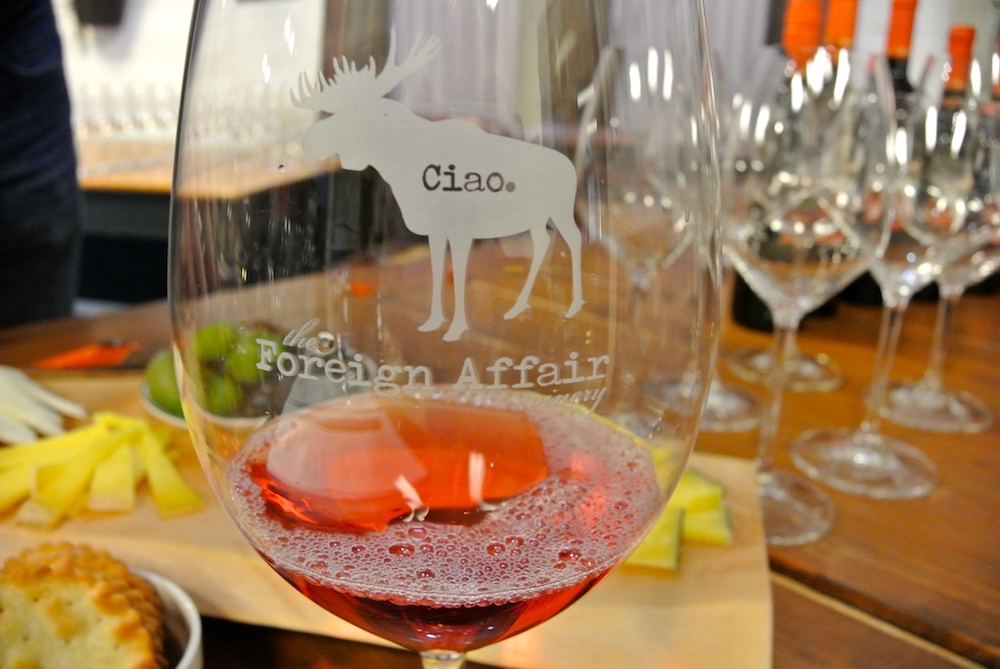
Foreign Affair Foreign Affair Amarosé 2018 ($19, 88 points) — The appassimento part of this rosé comes from just 5% of the 25% Chardonnay added to 75% fresh Pinot Noir. The colour is a bright and vibrant salmon with a bold nose of strawberry, cherry, intermingling cassis, cotton candy and rhubarb pie. It’s full flavoured and has more weight than typical Niagara rosés and is loaded with red fruits and just a hint of citrus zest on the finish.
Rest of the Vintages release:
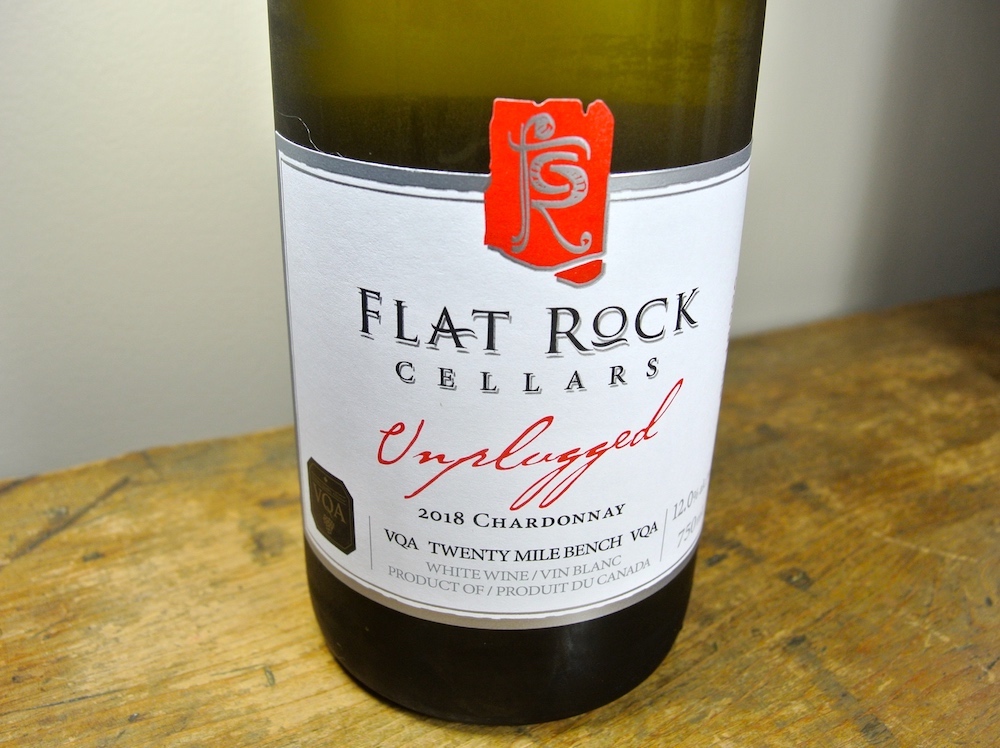
Flat Rock Unplugged Chardonnay 2018 ($18, 88 points) — This unoaked version of Flat Rock Chardonnay lets the fruit do all the talking. Such a fresh nose of peach, pear, apple and a lovely vein of minerality with just a touch of citrus. It’s fresh and crisp on the palate with a range of stone fruits, minerals and citrus with a clean, vibrant finish.
Also released, but not reviewed:
• Cave Spring Blanc de Blancs Brut Sparkling ($30)
• Creekside Backyard Bubbly Sauvignon Blanc 2017 ($25)
• Cave Spring Estate Chardonnay Musque 2016 ($18)
• Cave Spring Riesling 2016 ($20)
• Cave Spring Gewurztraminer 2016 ($19)
• Henry of Pelham Estate Riesling 2017 ($20)
• Nomad Sauvignon Blanc 2017 ($17)
• 13th Street Cabernet/Merlot 2017 ($20)
• Henry of Pelham Speck Family Reserve Cabernet/Merlot 2015 ($40)
• Wayne Gretzky Whisky Oak Aged Red 2017 ($20)
New Niagara wine releases

Drea’s Sauvignon Blanc 2017 ($26, available at Reif Estate, 90 points) — This Sauvignon Blanc from Andrea Kaiser, made in honour of her late father Karl Kaiser (see story here), is a beautiful tribute wine. Such a lovely nose of lemon, grapefruit, citrus pith, passion fruit, fresh herbs and grassy accents. It’s clean and fresh on the palate with zesty lime, lemon, gooseberries and integrated herbs that shine through the finish. Dry, racy and clean savvy. Karl would be proud.
Chateau des Charmes Cabernet Franc St. David’s Bench Vineyard 2016 ($35, 92 points) — Winemaker Amélie Boury says the 2016 version of this wine is the only Cabernet Franc is currently produced at the estate. The grapes are from one of the oldest plantings within the St. David’s Bench Vineyard (circa 1992) and it is only made in outstanding vintages. She recommends serving it with a big, juicy steak on the BBQ. It is classic Niagara Cab Franc on the nose with an expressive nose of bramble red berries, cassis, cigar leaf, lovely integrated spice and wild raspberry accents. It has firm structure on the palate with darker fruits of anise and cassis showing up to support the brambly red berries, licorice, integrated herbs and spice. Drink now with a juicy steak or hold on 5+ years to round out the tannins.
Arterra Epoca 2016 ($35, available at www.greatestatesnigara.com , 92 points) — Head winemaker Marco Piccoli describes his use of dried gapes (appassimento) as being inspired by “my Italian heritage and my experimentation of a new blend with the ripasso and appassimento in new oak. This is a true reflection of the Arterra style by proposing something unique, distinctive and a little conventional.” The Epoca is 100% Merlot from the top estate Delaine Vineyard with 20% of the grapes dried appassimento style to concentrate the flavours. The wine was aged for 12 months is a combination of French and American oak. It has a big nose of mocha, plums, dried cherries, field raspberries, vanilla, spice and blackberry jam with smoky/leathery accents. It’s a firm and robust red on the palate with thick cherry compote, cocoa bean, graphite, ripe plums, brambly raspberries with evident tannic structure, layers of fruit and soaked in barrel spices that all leads to a long finish. One to put away for 5+ years.

Serenity Baco Noir 2017 ($17, LCBO, 88 points) — Fans of this decidedly popular Niagara grape will enjoy discovering this new and very affordable version of Baco from the Lakeview Wine Company. It appears quite dense in the glass with a nose of smoky barrel spices, ripe cherries, blackberries, brambly raspberries and black currants. It’s smoky and earthy on the palate with anise, raspberries, licorice, currants, kirsch and lavish spice notes.
Serenity Sauvignon Blanc 2018 ($17, LCBO, 87 points) — A grassy nose with herbs, gooseberries, grapefruit and lime zest. It’s juicy on the palate with tropical fruits, lime, grassy, herbs and a crisp, refreshing finish.
Note: Some of the information in this post was provided by Brock (CCOVI) and Niagara College.


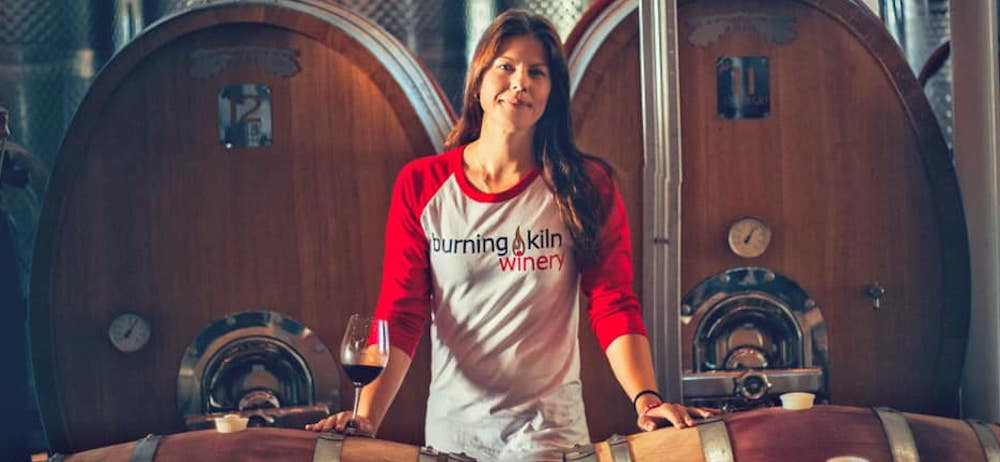



Just a small correction: Vadim Chelekhov is now winemaker at Kacaba now not assistant.